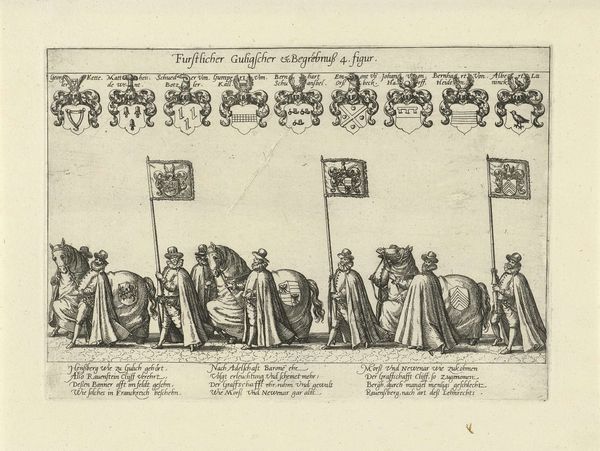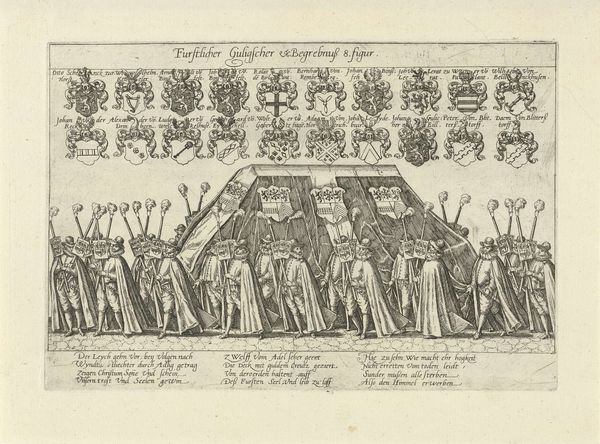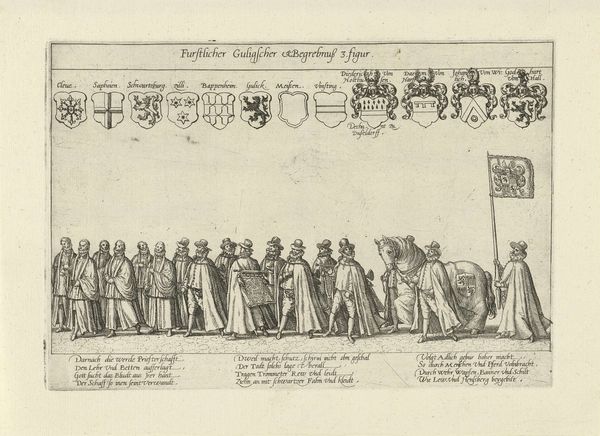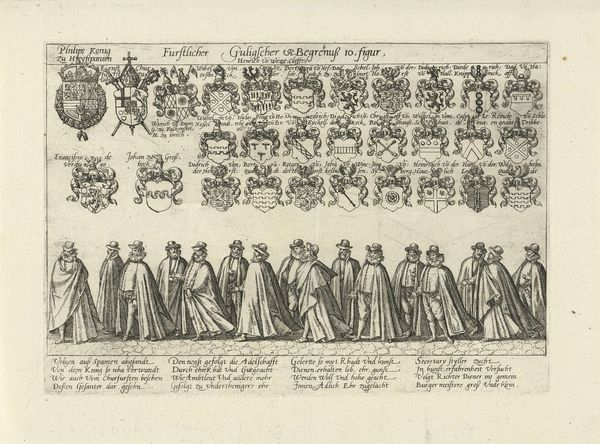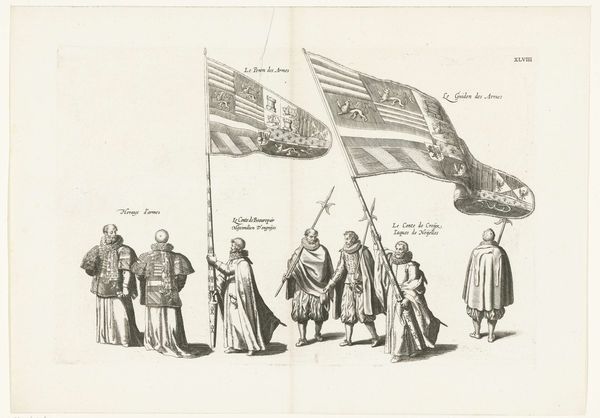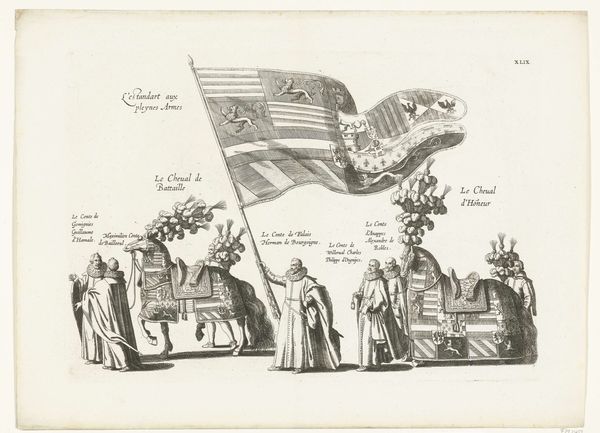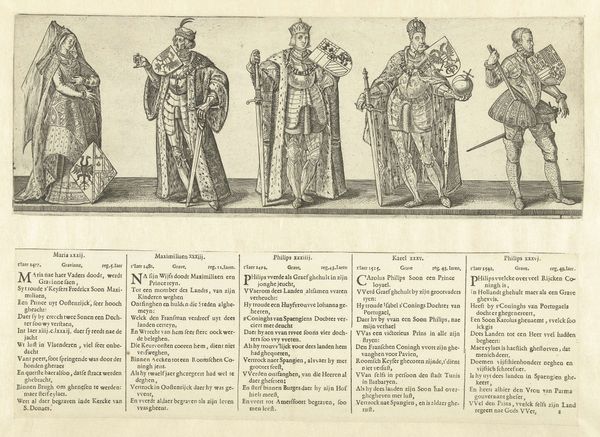
print, engraving
#
comic strip sketch
#
narrative-art
# print
#
old engraving style
#
figuration
#
11_renaissance
#
personal sketchbook
#
idea generation sketch
#
sketchwork
#
pen-ink sketch
#
line
#
pen work
#
sketchbook drawing
#
history-painting
#
storyboard and sketchbook work
#
northern-renaissance
#
sketchbook art
#
engraving
Dimensions: height 181 mm, width 259 mm
Copyright: Rijks Museum: Open Domain
Curator: This print by Frans Hogenberg, created in 1592, is entitled “Begrafenisstoet met vaandel- en wapendragers,” which translates to “Funeral Procession with Banner and Weapon Bearers.” It is currently held in the Rijksmuseum. Editor: My first impression is of meticulous, almost obsessive detail. There's a striking austerity to it as well, appropriate given the subject matter. I notice immediately how linear and structured the work is. Curator: Hogenberg, as a printmaker, would have been deeply concerned with the practicalities of reproduction and dissemination. The clear, precise lines are crucial for the engraving process, allowing for sharp impressions and multiple copies to be distributed widely. Consider the labor involved in creating such a work – the engraving, the inking, the printing... Each step demanding specialized skill and time. Editor: And look at those banners and shields displayed above the figures and on them. Each contains its own intricate emblem – a castle, a lion, lilies. They signify not just lineage, but also status and power, wouldn't you say? The entire procession can be read as a powerful statement about the deceased’s identity, even influence. Curator: Indeed. The procession itself highlights the social importance of these individuals. The act of publicly mourning and displaying heraldry served to reinforce social hierarchies and material power structures. Note also the repetitive nature of the figures—they almost appear mass-produced, not as individual characters, but rather a symbolic group. Editor: Yet the banners themselves aren't merely decorative; they operate on multiple levels. Religious motto inscribed on one and heraldic displays offer insights into the beliefs and history of those families, preserving a visual record of their legacies. Curator: Hogenberg, by choosing to represent this funeral procession through engraving, contributes to the construction of historical narratives. He freezes this ephemeral moment in time and enables its dispersal across social networks through a new form of media. Editor: It's quite remarkable to see how symbols persist, how they are imbued with new meanings and still carry their cultural charge across centuries. Curator: Examining this piece through a lens of artistic labor and materiality reveals that prints were far more than just decorative items. They were instruments through which ideologies, material value, and social order were reinforced and circulated. Editor: Reflecting on this work I appreciate the lasting power of imagery to evoke shared history and profound emotion, even after centuries.
Comments
No comments
Be the first to comment and join the conversation on the ultimate creative platform.

